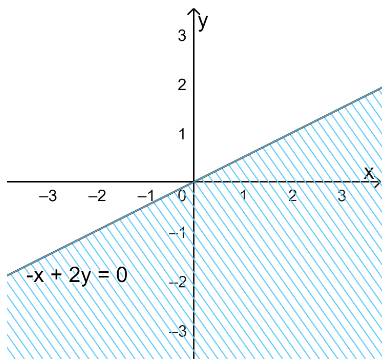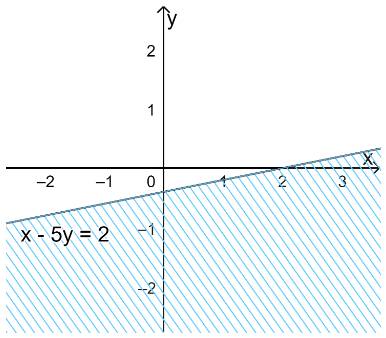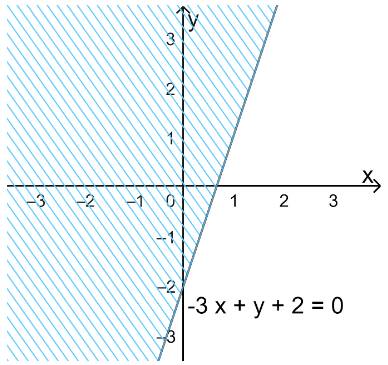tìm x biết
b) /2x-3/ + ( y-1)^2+ ( 27-1 )^2 \(\le\) 0
Hãy nhập câu hỏi của bạn vào đây, nếu là tài khoản VIP, bạn sẽ được ưu tiên trả lời.


a) hình như thiếu đề nha (theo mk nghỉ thì đề như thế này) : tìm x nguyên
(nếu đề đúng là : "tìm x nguyên" thì lời giải đây nha)
bài làm
ta có \(\left(đk:x\in Z\right)\) : x nguyên \(\Rightarrow x-1\) nguyên
\(x^2-2x+3\) chia hết cho \(x-1\) \(\Leftrightarrow\dfrac{x^2-2x+3}{x-1}\) là số nguyên
\(=\dfrac{x^2-2x+1+2}{x-1}=\dfrac{\left(x-1\right)^2+2}{x-1}=x-1+\dfrac{2}{x-1}\)
\(\Rightarrow\) \(x-1\) là ước của 2 là \(\pm1;\pm2\)
ta có : * \(x-1=1\Leftrightarrow x=2\left(tmđk\right)\)
* \(x-1=-1\Leftrightarrow x=0\left(tmđk\right)\)
* \(x-1=2\Leftrightarrow x=3\left(tmđk\right)\)
* \(x-1=-2\Leftrightarrow x=-1\left(tmđk\right)\)
vậy \(x=0;x=-1;x=2;x=3\)


\(\left(y-2\right)\left(y-3\right)+\left(y-2\right)-1=0\)
\(\Leftrightarrow\left(y-2\right)\left(y-3\right)+\left(y-3\right)=0\)
\(\Leftrightarrow\left(y-3\right)^2=0\)
\(\Leftrightarrow y=3\)
\(x^3+27+\left(x+3\right)\left(x-9\right)=0\)
\(\Leftrightarrow\left(x+3\right)\left(x^2-3x+9\right)+\left(x+3\right)\left(x-9\right)=0\)
\(\Leftrightarrow\left(x+3\right)\left(x^2-3x+9+x-9\right)=0\)
\(\Leftrightarrow\left(x+3\right)\left(x^2-2x\right)=0\)
\(\Leftrightarrow\left(x+3\right)x\left(x-2\right)=0\)
\(\Leftrightarrow x\in\left\{0;-3;2\right\}\)

Bài 1:tính
a)65.(-19)+19.(-35)
=65.(-19)+(-19).35
=(-19).(65+35)
=(-19).100
=-1900
b)85.(35-27)-35.(85-27)
=85.35-85.27-35.85+35.27
=(85.35-35.85)+(-85.27+35.27)
=27.(-85+35)
=27.(-50)
=1350
c)47.(45-15)-47.(45+15)
=47.[(45-15)-(45+15)]
=47.[30-60]
=47.(-30)
=-1410
Bài2: Tìm các số nguyên x biết
a)(-2).(x+6)+6.(x-10)=8
-2x-12+6x-60=8
4x-72=8
4x=72+8
4x=50
x=\(\frac{25}{2}\)
b)(-4).(2x+9)-(-8x+3)-(x+13)=0
-6x-36+8x-3-x-13=0
x-41=0
x=41
Bài 1: Tính
a) \(65.\left(-19\right)+19.\left(-35\right)\)
= \(-1235+-665\)
= \(-1900\)
b) \(85.\left(35-27\right)-35.\left(85-27\right)\)
= \(-1350\)
c) \(47.\left(45-15\right)-47.\left(45+15\right)\)
=\(-1410\)
Bài 2: Tìm x:
\(\left(-2\right).\left(x+6\right)+6.\left(x-10\right)=8\)
\(x=20\)

a, Ta thấy: \(\hept{\begin{cases}\left|x+\frac{3}{4}\right|\ge0\\\left|y-\frac{2}{5}\right|\ge0\\\left|z+\frac{1}{2}\right|\ge0\end{cases}\Rightarrow\left|x+\frac{3}{4}\right|+\left|y-\frac{2}{5}\right|+\left|z+\frac{1}{2}\right|\ge0}\)
Mà đề cho là \(\left|x+\frac{3}{4}\right|+\left|y-\frac{2}{5}\right|+\left|z+\frac{1}{2}\right|\le0\)
\(\Rightarrow\hept{\begin{cases}x+\frac{3}{4}=0\\y-\frac{2}{5}=0\\z+\frac{1}{2}=0\end{cases}\Rightarrow\hept{\begin{cases}x=\frac{-3}{4}\\y=\frac{2}{5}\\z=\frac{-1}{2}\end{cases}}}\)
Vậy....
b, (x - 2)2 = 1
=> x - 2 = 1 hoặc x - 2 = -1
=> x = 3 hoặc x = 1
Vậy...
c, (2x - 1)3 = -27
=> 2x - 1 = -3
=> 2x = -2
=> x = -1

4) Áp dụng bất đẳng thức Bunyakovsky
\(\Rightarrow\left(x^4+yz\right)\left(1+1\right)\ge\left(x^2+\sqrt{yz}\right)^2\)
\(\Rightarrow\dfrac{x^2}{x^4+yz}\le\dfrac{2x^2}{\left(x^2+\sqrt{yz}\right)^2}\)
Tượng tự ta có \(\left\{{}\begin{matrix}\dfrac{y^2}{y^4+xz}\le\dfrac{2y^2}{\left(y^2+\sqrt{xz}\right)^2}\\\dfrac{z^2}{z^4+xy}\le\dfrac{2z^2}{\left(z^2+\sqrt{xy}\right)^2}\end{matrix}\right.\)
\(\Rightarrow VT\le2\left[\dfrac{x^2}{\left(x^2+\sqrt{yz}\right)^2}+\dfrac{y^2}{\left(y^2+\sqrt{xz}\right)^2}+\dfrac{z^2}{\left(z^2+\sqrt{xy}\right)}\right]\)
Chứng minh rằng \(2\left[\dfrac{x^2}{\left(x^2+\sqrt{yz}\right)^2}+\dfrac{y^2}{\left(y^2+\sqrt{xz}\right)^2}+\dfrac{z^2}{\left(z^2+\sqrt{xy}\right)}\right]\le\dfrac{3}{2}\)
\(\Leftrightarrow\dfrac{x^2}{\left(x^2+\sqrt{yz}\right)^2}+\dfrac{y^2}{\left(y^2+\sqrt{xz}\right)^2}+\dfrac{z^2}{\left(z^2+\sqrt{xy}\right)^2}\le\dfrac{3}{4}\)
Áp dụng bất đẳng thức Cauchy
\(\Rightarrow x^2+\sqrt{yz}\ge2\sqrt{x^2\sqrt{yz}}=2x\sqrt{\sqrt{yz}}\)
\(\Rightarrow\left(x^2+\sqrt{yz}\right)^2\ge4x^2\sqrt{yz}\)
\(\Rightarrow\dfrac{x^2}{\left(x^2+\sqrt{yz}\right)^2}\le\dfrac{x^2}{4x^2\sqrt{yz}}=\dfrac{1}{4\sqrt{yz}}\)
Tượng tự ta có \(\left\{{}\begin{matrix}\dfrac{y^2}{\left(y^2+\sqrt{xz}\right)^2}\le\dfrac{1}{4\sqrt{xz}}\\\dfrac{z^2}{\left(z^2+\sqrt{xy}\right)^2}\le\dfrac{1}{4\sqrt{xy}}\end{matrix}\right.\)
\(\Leftrightarrow\dfrac{x^2}{\left(x^2+\sqrt{yz}\right)^2}+\dfrac{y^2}{\left(y^2+\sqrt{xz}\right)^2}+\dfrac{z^2}{\left(z^2+\sqrt{xy}\right)^2}\le\dfrac{1}{4}\left(\dfrac{1}{\sqrt{xy}}+\dfrac{1}{\sqrt{yz}}+\dfrac{1}{\sqrt{xz}}\right)\)
Chứng minh rằng \(\dfrac{1}{4}\left(\dfrac{1}{\sqrt{xy}}+\dfrac{1}{\sqrt{yz}}+\dfrac{1}{\sqrt{xz}}\right)\le\dfrac{3}{4}\)
\(\Leftrightarrow\dfrac{1}{\sqrt{xy}}+\dfrac{1}{\sqrt{yz}}+\dfrac{1}{\sqrt{xz}}\le3\)
Theo đề bài ta có \(x^2+y^2+z^2=3xyz\)
\(\Rightarrow\dfrac{x}{yz}+\dfrac{y}{xz}+\dfrac{z}{xy}=3\)
\(\Rightarrow\dfrac{1}{\sqrt{xy}}+\dfrac{1}{\sqrt{yz}}+\dfrac{1}{\sqrt{xz}}\le3\)
\(\Leftrightarrow\dfrac{1}{\sqrt{xy}}+\dfrac{1}{\sqrt{yz}}+\dfrac{1}{\sqrt{xz}}\le\dfrac{x}{yz}+\dfrac{y}{xz}+\dfrac{z}{xy}\)
Áp dụng bất đẳng thức Cauchy
\(\Rightarrow\dfrac{1}{\sqrt{xy}}\le\dfrac{\dfrac{1}{x}+\dfrac{1}{y}}{2}\)
Tượng tự ta có \(\left\{{}\begin{matrix}\dfrac{1}{\sqrt{xz}}\le\dfrac{\dfrac{1}{x}+\dfrac{1}{z}}{2}\\\dfrac{1}{\sqrt{yz}}\le\dfrac{\dfrac{1}{z}+\dfrac{1}{y}}{2}\end{matrix}\right.\)
\(\Rightarrow\dfrac{1}{\sqrt{xy}}+\dfrac{1}{\sqrt{yz}}+\dfrac{1}{\sqrt{xz}}\le\dfrac{1}{x}+\dfrac{1}{y}+\dfrac{1}{z}\) (1)
Áp dụng bất đẳng thức Cauchy
\(\Rightarrow\dfrac{x}{yz}+\dfrac{y}{xz}\ge2\sqrt{\dfrac{1}{z^2}}=\dfrac{2}{z}\)
Tượng tự ta có \(\left\{{}\begin{matrix}\dfrac{y}{xz}+\dfrac{z}{xy}\ge\dfrac{2}{x}\\\dfrac{x}{zy}+\dfrac{z}{xy}\ge\dfrac{2}{y}\end{matrix}\right.\)
\(\Rightarrow2\left(\dfrac{x}{yz}+\dfrac{y}{xz}+\dfrac{z}{xy}\right)\ge2\left(\dfrac{1}{x}+\dfrac{1}{y}+\dfrac{1}{z}\right)\)
\(\Leftrightarrow\dfrac{x}{yz}+\dfrac{y}{xz}+\dfrac{z}{xy}\ge\dfrac{1}{x}+\dfrac{1}{y}+\dfrac{1}{z}\) (2)
Từ (1) và (2)
\(\Rightarrow\dfrac{1}{\sqrt{xy}}+\dfrac{1}{\sqrt{yz}}+\dfrac{1}{\sqrt{xz}}\le3\) ( đpcm )
Vậy \(\dfrac{1}{4}\left(\dfrac{1}{\sqrt{xy}}+\dfrac{1}{\sqrt{yz}}+\dfrac{1}{\sqrt{xz}}\right)\le\dfrac{3}{4}\)
\(\Rightarrow2\left[\dfrac{x^2}{\left(x^2+\sqrt{yz}\right)^2}+\dfrac{y^2}{\left(y^2+\sqrt{xz}\right)^2}+\dfrac{z^2}{\left(z^2+\sqrt{xy}\right)}\right]\le\dfrac{3}{2}\)
Mà \(VT\le2\left[\dfrac{x^2}{\left(x^2+\sqrt{yz}\right)^2}+\dfrac{y^2}{\left(y^2+\sqrt{xz}\right)^2}+\dfrac{z^2}{\left(z^2+\sqrt{xy}\right)}\right]\)
\(\Rightarrow VT\le\dfrac{3}{2}\) ( đpcm )
Dấu " = " xảy ra khi \(x=y=z=1\)
3. Ta có :\(x^2\left(1-2x\right)=x.x.\left(1-2x\right)\le\dfrac{\left(x+x+1-2x\right)^3}{27}=\dfrac{1}{27}\)(bđt cô si)
Dấu "=" xảy ra khi :x=1-2x\(\Leftrightarrow x=\dfrac{1}{3}\)
Vậy max của Qlaf 1/27 khi x=1/3

Tham khảo:
a) Vẽ đường thẳng \(\Delta : - 2x + y - 1 = 0\) đi qua hai điểm \(A(0;1)\) và \(B\left( { - 1; - 1} \right)\)
Xét gốc tọa độ \(O(0;0).\) Ta thấy \(O \notin \Delta \) và \( - 2.0 + 0 - 1 = - 1 < 0\)
Do đó, miền nghiệm của bất phương trình là nửa mặt phẳng kể cả bờ \(\Delta \), chứa gốc tọa độ O
(miền không gạch chéo trên hình)

b) Vẽ đường thẳng \(\Delta : - x + 2y = 0\) đi qua hai điểm \(O(0;0)\) và \(B\left( {2;1} \right)\)
Xét điểm \(A(1;0).\) Ta thấy \(A \notin \Delta \) và \( - 1 + 2.0 = - 1 < 0\)
Do đó, miền nghiệm của bất phương trình là nửa mặt phẳng không kể bờ \(\Delta \), không chứa điểm A (1;0)
(miền không gạch chéo trên hình)

c) Vẽ đường thẳng \(\Delta :x - 5y = 2\) đi qua hai điểm \(A(2;0)\) và \(B\left( { - 3; - 1} \right)\)
Xét gốc tọa độ \(O(0;0).\) Ta thấy \(O \notin \Delta \) và \(0 - 5.0 = 0 < 2\)
Do đó, miền nghiệm của bất phương trình là nửa mặt phẳng không kể bờ \(\Delta \), chứa gốc tọa độ O
(miền không gạch chéo trên hình)

d) Vẽ đường thẳng \(\Delta : - 3x + y + 2 = 0\) đi qua hai điểm \(A(0; - 2)\) và \(B\left( {1;1} \right)\)
Xét điểm \(O(0;0).\) Ta thấy \(O \notin \Delta \) và \( - 3.0 + 0 + 2 = 2 > 0\)
Do đó, miền nghiệm của bất phương trình là nửa mặt phẳng kể cả bờ \(\Delta \), không chứa điểm O (0;0)
(miền không gạch chéo trên hình)

e) Ta có: \(3(x - 1) + 4(y - 2) < 5x - 3 \Leftrightarrow - 2x + 4y - 8 < 0 \Leftrightarrow - x + 2y - 4 < 0\)
Vẽ đường thẳng \(\Delta : - x + 2y -4 = 0\) đi qua hai điểm \(A(0;2)\) và \(B\left( {-4;0} \right)\)
Xét điểm \(O(0;0).\) Ta thấy \(O \notin \Delta \) và \( - 0 + 2.0 -4 = -4 < 0\)
Do đó, miền nghiệm của bất phương trình là nửa mặt phẳng không kể bờ \(\Delta \), chứa điểm O (0;0)
(miền không gạch chéo trên hình)


a/ \(x^2+y^2=x^2+y^2+2xy-2xy =\left(x+y\right)^2-2xy\)
b/ mình không chắc nữa
bài 3
a/ \(9x^2-49=0 \Leftrightarrow x^2=\frac{49}{9} \Leftrightarrow\orbr{\begin{cases}x=\frac{7}{3}\\x=-\frac{7}{3}\end{cases}}\)
b/ \(\left(x+3\right)\left(x^2-3x+9\right)-x\left(x+1\right)\left(x-1\right)-27=0 \Leftrightarrow x^3+27-x\left(x^2-1\right)-27=0\)
\(\Leftrightarrow x^3-x^3+x=0\Leftrightarrow x=0\)
c/\(\left(x-1\right)\left(x+2\right)-x-2=0 \Leftrightarrow \left(x-1\right)\left(x+2\right)-\left(x+2\right)=0\)
\(\Leftrightarrow\left(x+2\right)\left(x-1\right)^2=0\Leftrightarrow\orbr{\begin{cases}x+2=0\\x-1=0\end{cases}\Leftrightarrow\orbr{\begin{cases}x=-2\\x=1\end{cases}}}\)
d/ \(x\left(3x+2\right)+\left(x+1\right)^2-\left(2x-5\right)\left(2x+5\right)=0\)
\(\Leftrightarrow3x^2+2x+x^2+2x+1-4x^2+25=0\)
\(\Leftrightarrow4x+25=0 \Leftrightarrow x=\frac{-25}{4}\)
e/ mình lười qá ko viết đề đâu
\(\Leftrightarrow4x^2-7x-2-4x^2+4x+3=7\)
\(\Leftrightarrow-3x+1=7 \Leftrightarrow x=-2\)
có gì sai bn sửa lại nha